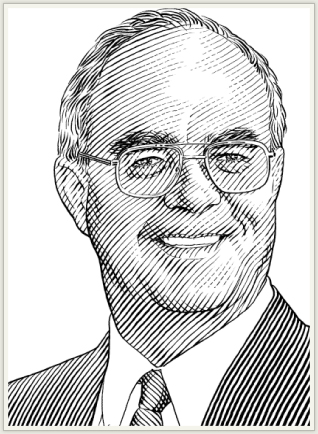Since its introduction, the positron-emission tomography (PET) scan has shown great potential to improve our ability to care for patients with lymphoma. By demonstrating which masses seen on a computed tomography (CT) scan represent viable tumor, and by identifying viable tumor in places that were not seen on the CT scan, PET scans offer a major advance. However, PET scanning is complicated. A wide variety of factors—including time from injection to scan, the patient’s blood glucose, the method of calculating the area of interest for standardized uptake value (SUV) calculations, the method of interpretation (ie, visual/Gestalt interpretation vs basing the interpretation on SUV calculations), and a lack of standardization—have made the application of PET scanning in the care of lymphoma patients less than perfect.
Lessons of the INR and PT
On a recent trip to New York, one of our mothers needed an international normalization ratio (INR) for monitoring anticoagulation with warfarin. The practice of calculating the INR was introduced in the 1980s in an effort to standardize the prothrombin time (PT), which can be extremely variable as measured at different laboratories. The INR method offers a consistent result and enabled this woman’s primary care physician to balance her risk of clotting and bleeding despite being a time zone away. This is a routine experience, and clinicians have grown accustomed to ignoring the location of where a prothrombin time was performed and only paying attention to the INR.
You might ask, how can we learn anything regarding lymphoma from the history of the development of the INR and its necessary but forgotten partner, the PT? Well, just go with it, and keep reading.
Over the past decade, experts in the fields of radiology, nuclear medicine, and hematologic oncology have been meeting and formalizing experiences and/or studies in an attempt to standardize response evaluations in treated lymphoma patients using PET/CT. A lot has changed in a decade. We need a control not unlike what the INR does for the PT, so that we are all speaking the same language regardless of what time zone we’re in.
Deauville Score
To try to improve comparisons among different machines and centers, and to standardize the interpretation of response to PET scans in the same way that the INR has standardized the interpretation of PT measurements, a group of investigators met in Deauville, France, in 2009 and proposed a new approach. The Deauville score grades a scan from 1 to 5, with the score of 1 meaning no uptake consistent with lymphoma. All other scores are in relation to background uptake that is always present in the mediastinal blood pool and liver (see Table 1).
Uptake in the mediastinal blood pool is consistently lower than in the liver. A score of 2 indicates uptake but at a lower value than in the mediastinal blood pool, 3 denotes uptake with an intensity between the mediastinal blood pool and liver, and 4 would be an uptake greater than in the liver. A score of 5 means a dramatic increase in uptake and/or new sites of involvement. Using this method, a Deauville score of 1 or 2 is accepted as a complete response to treatment and, especially for interim scans, a score of 3 is also often taken as a complete response.
The beauty of the Deauville score is that we are our own control. The mediastinal blood pool SUV and liver SUV are relatively fixed values but could vary significantly between patients—not unlike how the PT can vary between hospitals as a result of heterogeneous reagents.
The Deauville score also allows for premeditated risk stratification based on the objectives of using PET/CT. Excellent examples of this approach include scenarios in early- and advanced-stage lymphoma: If the strategy is to test escalation of therapy based on interim PET/CT, it might be prudent to use a higher SUV cutpoint (ie, Deauville 3), which could reduce the number of unnecessary and potentially more risky therapeutic escalations. If testing to discontinue or reduce therapy, we should again be prudent, and a Deauville 2 cutpoint may be considered. This is where strategies based on changes in SUV may falter and lack global acceptance despite persuasive prognostic arguments.
Conclusions and Caveats
We are heading in the right direction with appropriate PET/CT evaluation in currently accruing or accrued clinical trials, but outside of a clinical trial, far too many PET/CT results lack reporting of the mediastinal blood pool or liver SUVs. The ordering physician is often responsible for this lack of reporting, having failed to provide the radiologist or nuclear medicine physician with adequate information to acknowledge that this is a staging, interim, or post-treatment PET/CT. As a result, an SUV of 3.2 can leave the oncologist scratching his head and dreading the conversation with the patient that will often ensue. We should be asking for the anatomic control SUVs, not persuading a colleague to provide a second opinion for reassurance.
The Deauville score offers oncologists the opportunity to confidently use the PET scan to determine a patient’s response to chemotherapy for lymphoma. However, there are some caveats. For example, the best response to chemotherapy can be determined more quickly than the best response to radiotherapy, where it can sometimes take 2 or 3 months to see a complete response.
Even so, the Deauville score represents a significant advance in interpreting response to therapy for patients treated with chemotherapy for lymphoma. It should become a standard approach for oncologists who care for these patients. ■
Disclosure: Dr. Lunning reported no potential conflicts of interest. Dr. Armitage has served as a consultant for GlaxoSmith Kline, Seattle Genetics, Genentech, Roche, Spectrum, and Ziopharm. He is on the Board of Directors’ of Tesaro bio, Inc.
Dr. Lunning is an assistant professor, and Dr. Armitage is Professor, Department of Internal Medicine, and Joe Shapiro Distinguished Chair of Oncology, University of Nebraska Medical Center, Omaha.
Disclaimer: This commentary represents the views of the authors and may not necessarily reflect the views of ASCO.



